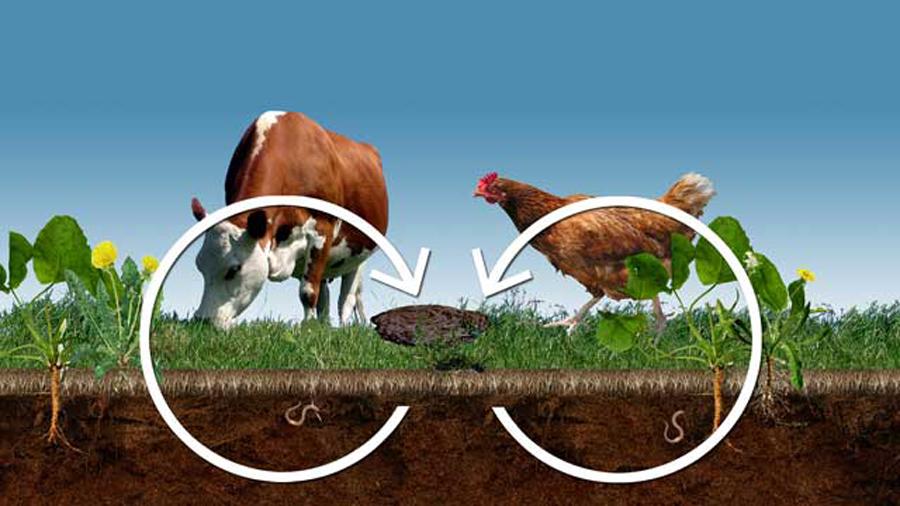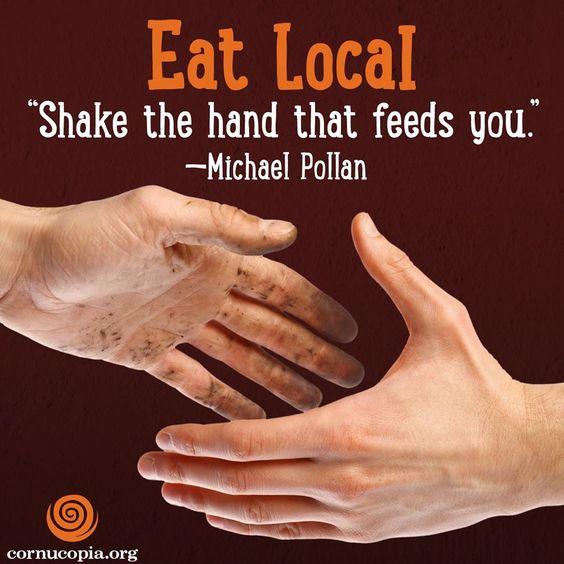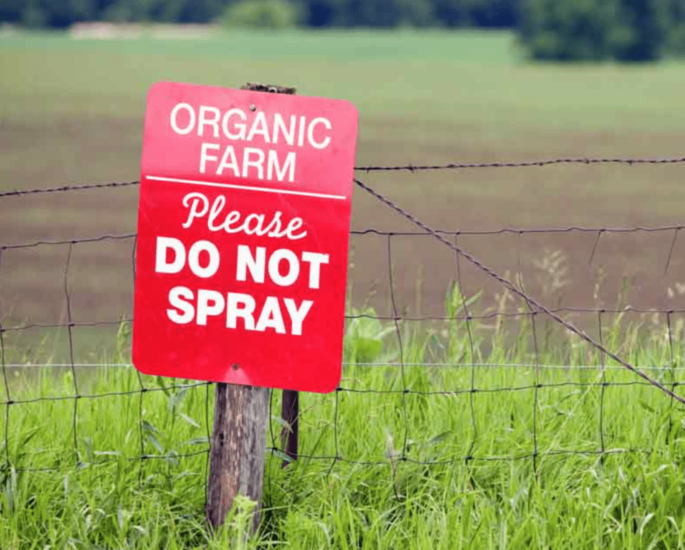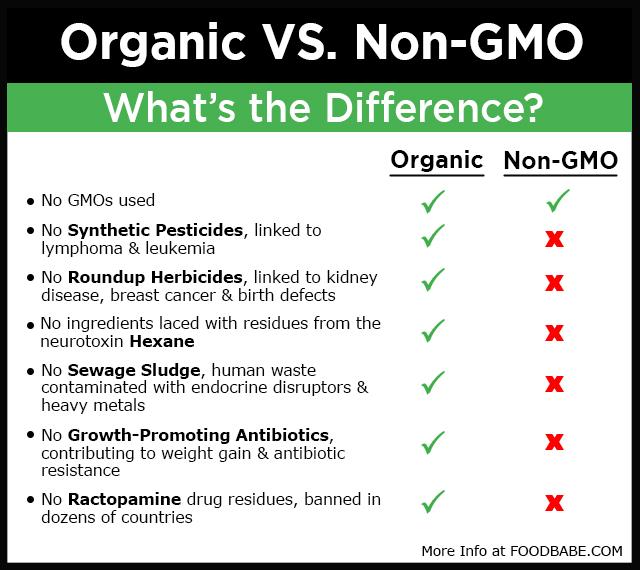Yep, expect a few surprises here. What does it really mean to be certified organic? Who are the BIGGEST producers of organic foods? What are the 3 levels of organic? Are “organic” farms tested by the USDA? How is increasing demand for organic causing more lenient enforcement? Are there stiff penalties for failing to meet requirements? What about international organic foods – are they actually reliable?
Organic products must meet strict requirements.
In the USA, products must follow the NOP (National Organic Program), a division of the USDA Dept of Agriculture. Organic foods are required to ensure cycling of resources, promote ecological balance, and conserve biodiversity. Livestock must have regular access to pasture without routine antibiotics or growth hormones. Products must follow strict production, handling and labeling standards, and go through a certification process. The standards look at many other factors such as soil quality, animal raising, pests and weed control. Synthetic fertilizers, human sewage sludge, irradiation, and GMO ingredients are not allowed.
Foods claiming to be organic must be free of artificial food additives, processed with fewer artificial methods, materials and conditions, with no chemical ripening, or food irradiation. Pesticides are allowed if they are not synthetic. (However, US organic standards allow that if pests and weeds are not controllable through management practices, nor via organic pesticides and herbicides, “a substance included on the National List of synthetic substances allowed for use in organic crop production may be applied to prevent, suppress, or control pests, weeds, or diseases.”
Organic is better than Non-GMO.
Organic means effort is made to minimize the use of synthetic chemicals, herbicides and pesticides. It means no human sewage can be used on the crops, and no routine antibiotics or growth hormones are allowed. Non-GMO certification merely requires that no GMO ingredients be present.
There are three levels of organic:
- ‘100% organic’ is the highest level, for packaged foods and produce.
- ‘Organic’ products contain at least 95% organic ingredients.
- ‘Made with organic ingredients’ contains at least 70% organic ingredients.
Increasing Organic Demand Means Promise of Higher Profits
With the phenomenal growth in consumer demand for organic products, giants like Kraft and Tyson Foods have moved to capture this multibillion-dollar market, except they don’t want to play by the old rules. Big Food found an ally in Dr. Robert Robinson, administrator of the NOP during the George W. Bush years.
Lenient Enforcement of Organic Regulations
The NOP has been criticized for ignoring many of the standards recommended by the board. For example, specific rules that organic dairy farmers must provide cows “access to pasture”, have been watered down for giant milk producer, Dean Foods (Horizon dairy products), allowed to sell “organic” milk from factory-confined cows instead of allowing them to graze in open pastures. The large corporate farms re-interpreted the pasture rule by merely providing a window in a pen, leaving the animals always confined.

Relaxed Allowances for Synthetics in Organic foods
At the start of the certification program, 77 non-organic ingredients were on the allowable list, but today 245 ingredients are listed, including manmade copper sulfate for fungal infections that’s known to be highly toxic to humans, fish, and insects. Synthetic vitamins and minerals are deemed OK with the FDA. Read the current list of allowed and prohibited substances:
No Testing of Organic Farms Yet…
So far, no testing has been done by the USDA NOP on Organic farms. Now they say they will test a sampling of 5% of organic certified farms. Considering that here is still no threshold set for GMO contamination, if they find it, what are they going to do?
Conflict of Interest?
An inherent conflict of interest is built into the Organic certification system. The very agencies that inspect organic farmers and processors, and certify their products, are paid by the farmers they certify. A recent audit showed that the State of California, which was given authority to oversee the USDA’s organic standards, was woefully inadequate in its oversight and enforcement.
Low Penalties for Violators
Violations of the USDA’s organic labeling rules can result in civil penalties up to $11,000. Well, doesn’t that seem low? Low penalties and the sheer volume of organic products flooding the markets have led to skepticism that the USDA is actually upholding the laws, inspecting foods and punishing violators. Some say that “organic” has become a marketing term with little meaning. Still, when you buy organic goods at most stores and from most known brands, you can be largely sure that it meets the guidelines.
CAFO Animal Waste Permitted on Organic Farms
A disappointing revelation is that wastewater from CAFO “confined feeding animal operation” factory farms and fish farms can be used on organic crops. This means organic farms are allowed to use manure from livestock grown in confinement and fed GMO feeds. Glyphosate, the carcinogenic active ingredient in Roundup by Monsanto, is the most widely used herbicide in conventional farming. And it is allowed in manure used to grow organic produce.
Regulations require heating the manure to 150 °F to kill microorganisms. But heating doesn’t dissolve other contaminants from animal feed like lead, mercury, pesticides, herbicides, drugs, and other environmental pollutants.
The problem occurs because the USDA defines manure, whether from organic or non-organic livestock production, as an allowed “organic” fertilizer, as it came from a living organism. This means that organic farmers are permitted to use manure from non-organic cattle, chicken houses, pig barns, and fish farms.
Chemically Fixed Nitrogen: A BIG Source of Greenhouse Gas Emission.
As long as organic farms are allowed to use manure from non-organic farms, they are reliant on chemically fixed nitrogen. So does industrial organic farming now depend on the very synthetic fertilizers and the CAFO farms that it prohibits? The link in this reliance is animal manure and the key nutrient is nitrogen.
Nitrogen is the most limiting nutrient for global food production, and the most important. Although the air is full of nitrogen, it is unavailable to plants until it is “fixed” in a form available to plants, such as ammonia. Nitrogen can be either biologically fixed or chemically fixed. Biological fixation occurs in legume plants. This is the supposed source of nitrogen in organic farming. Chemical fixation of nitrogen is done through the Haber-Bosch process, which currently uses natural gas to produce nitrogen fertilizer. This energy intensive process is one of the main sources of greenhouse gas emissions associated with non-organic farming.
“Industrial Organic” Farming is Unsustainable
Organic certification has no provision for fossil fuels with regard to planting, harvesting, or transporting organic foods. So although organic farms need to adhere to certain environmental standards when they plant and rotate their crops, the certification does not prevent them from growing produce in South America or China and shipping it all the way to North Dakota.
Plant Debris and Animal Poop, the Key to Healthy Soil Microorganisms
The Earth’s soil is now being depleted of nutrients over 13% faster than they can be replaced. We may also be facing looming shortages of two critical fertilizer ingredients: phosphorous and potassium. Because of chemical fertilizers, many areas of Minnesota, prime farmland, now suffer dangerously levels of nitrogen in their drinking water. Most of the lakes in China also suffer from fertilizer runoff.

We need plant debris, animal poop, and WORMS recycled back into the Earth.
Rather than chemical fertilizers, we need the cycle of animal poop. Mother Earth always makes use of the animal cycle of eating and pooping. She always mixed her wild crops, never attempting to grow only plants. This preserves the soil and prevents erosion. Mixed wastes from plants and animals break down into fertile soil with utter efficiency. The processes of growth and decay balance each other, creating large reserves of fertility.
According to soil science expert, fertilizers are not necessary. Healthy plant growth is dependent on having the right helper organisms in the soil. Mixed plants with animal agriculture was the norm 100 years ago. Organic farming continues these natural, time-tested techniques that prevent soil depletion and destruction. Organic farming does not need to use chemical fertilizers and other agricultural chemicals that pollute our soil, air, and waterways.

Know your Farmer, Know your Food
If you truly care about what you are eating and feeding your family, look to local sustainable farms and farmers’ market. Local farmers may not be certified organic, but they’re likely experts in organic farming.
As industrial agricultural firms are fast replacing independent farmers as the primary organic producers, it’s becoming clear that “certified organic” doesn’t guarantee your food is healthier or sustainable, or fair to workers.
The future of food depends on clear information and better communication. To create healthy food in the future, we need to understand the complete life-cycle impacts of each system, how it impacts the earth and humans.
Read about the adventures of a food researcher: Organic: A Journalist’s Quest to Discover the Truth behind Food Labeling, by Peter Laufer, PhD. Part food narrative, part investigation, part adventure story, an eye-opening and entertaining look into the anything goes world behind the organic label.
Talk to your local farmers. Ask about their challenges and concerns.
Ask about the health of their soil microbes, and if they practice sustainable farming methods. Ask how they control weeds.
Ask if their produce is Monsanto-free. If they raise animals, what do their animals eat? If they raise beef, do they feed or finish with GMO grains? If they raise chickens, is the feed free of GMO’s and chemicals?
Who Owns Organic foods?
Would you believe that Pepsi, CocaCola, General Mills, Mars, and Nestle are among the top sellers of Organic foods in the US? This image tells a clear story. It’s important to look for LOCAL non-GMO foods raised without chemicals. This fascinating chart by cornucopia.org, shows the top organic companies in the US as of 2014.

Do We Import “Fake Organics” from other countries?
You bet we do! Demand for organic food is growing faster than domestic supply. 40% of the organic food consumed in the US is now imported from over 100 other countries. Tainted foods from China were sold by Carrefour and Wal-Mart for two years as “organic”, even though they were not verified pesticide-free.
Fraudulent organic labeling is commonplace in Argentina, Ecuador, China, Guatemala, Honduras, Mexico, Philippines and Thailand. Yet these are our top suppliers of organic fruits and vegetables.

The US is not immune to corruption. Organic certification was started to support small farmers. Instead, the organic industry is being co-opted by mega-corporations, so the loopholes in organic standards and regulation are getting bigger. Five giant farms control one-half of the $400 million organic produce market in California.
A Massive Fraudulent Case in Point
This recent article in the Washington Post describes an international shipment of conventional soy and corn that was re-classified organic, boosting the value by some $4 million dollars!
The labels said ‘organic.’ But these massive imports of corn and soybeans weren’t.
A shipment of 36 million pounds of soybeans sailed late 2016 from Ukraine to Turkey to California. Along the way, it underwent a remarkable transformation. The cargo began in the Ukraine as conventional soybeans, according to documents obtained by The Washington Post, and they were fumigated with a pesticide prohibited under organic regulations. They were priced like conventional soybeans, too. But by the time the 600-foot cargo ship carrying them to Stockton, California arrived in December, the soybeans had been re-classified “organic,” according to receipts, invoices and other shipping records. That switch — the addition of the “USDA Organic” designation — boosted their value by approximately $4 million, creating a windfall for at least one company in the supply chain.
Two other grain shipments examined by the Washington Post uncovered similar fraud. The three shipments, each involving millions of pounds of “organic” corn or soybeans, were large enough to constitute a meaningful proportion of the US supply of those commodities. “The US market is the easiest for potentially fraudulent organic products to penetrate because the chances of getting caught here are not very high,” said John Bobbe, executive director of the Organic Farmers’ Agency for Relationship Marketing, or OFARM, a farmer cooperative. In Europe and Canada, he said, import rules for organics are much stricter. Often when the USDA has responded to complaints of questionable imports, action has come too late to prevent the products from reaching consumers.
This hurts consumers, who are paying more for junk. It hurts real organic farmers because prices for “fake” organic are often lower. Are the USDA, for-profit organic certifiers or their international representatives getting payoffs to allow fraud to happen? Read the whole story.






No Replies to "Uh Oh! Big Loopholes in Organic Regulations"